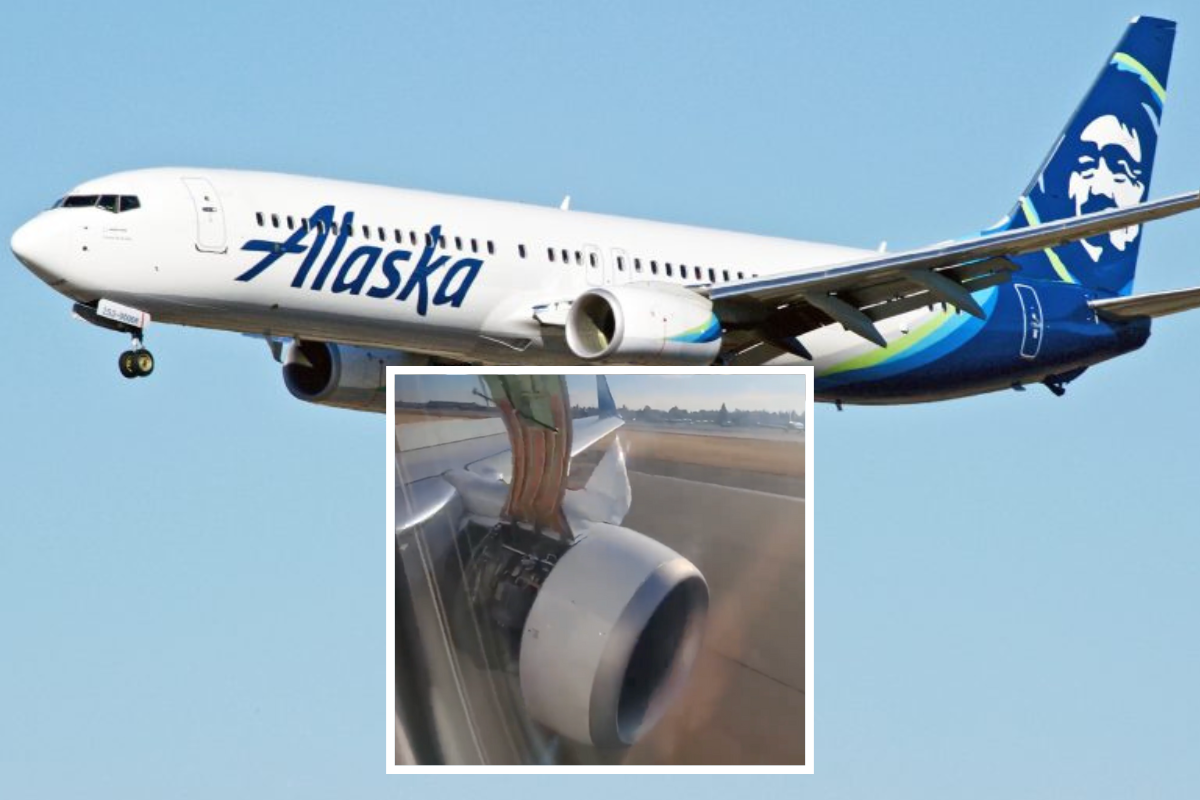
An Alaska Airlines flight from Seattle to San Diego was forced to make an emergency return to SeaTac Airport on Monday afternoon after the pilots felt worrying “unusual vibrations” coming from the aircraft shortly after takeoff.
That vibration was coming from one of the two CFM-manufactured turbofan engines powering the nearly four-year-old Boeing 737-900 aircraft.
Lmao, no one gonna talk about this or is Twitter's algorithm giving me the runaround?
— aspin the askal (@asminnow) August 23, 2022
Alaska Airlines 588 had some sort of uh…loss of cowling on its number 1 engine, landed safely in SEA
Glad to see everyone's ok! pic.twitter.com/WXuwNf3w3K
A dramatic video shared on social media by a passenger aboard the flight shows the outer covering of the engine (known as the cowling) being ripped clean off the engine as the plane landed back at SeaTac.
All 176 passengers and six crew members were unharmed according to Alaska Airlines which said in a statement that the aircraft had now been removed from service for an investigation.
A spokesperson for the airline said the crew aboard flight AS558 had dealt with the emergency with “tremendous professionalism and care”.
According to data provided by FlightRadar24, the flight reached around 12,000 feet before quickly descending and circling back to SeaTac Airport where the aircraft landed safely around 40 minutes after takeoff.
In 2019, the National Transportation Safety Board said Boeing should make design changes to the cowling of 737 NG engines following a freak 2018 accident involving a Southwest Airlines flight in which one passenger was tragically killed.
During Southwest flight 1380, a fan blade failure caused the cowling to come apart, and debris hit the aircraft. A passenger window was broken by the debris, and the cabin suffered a rapid depressurization. One of the passengers was partially sucked out the window and subsequently died from her injuries.
The cause of Wednesday’s cowl failure has not yet been established.
Mateusz Maszczynski honed his skills as an international flight attendant at the most prominent airline in the Middle East and has been flying ever since... most recently for a well known European airline. Matt is passionate about the aviation industry and has become an expert in passenger experience and human-centric stories. Always keeping an ear close to the ground, Matt's industry insights, analysis and news coverage is frequently relied upon by some of the biggest names in journalism.







